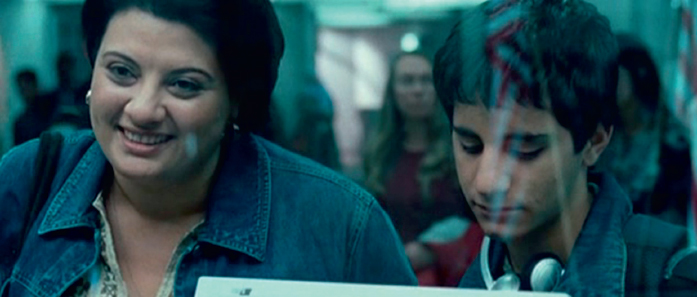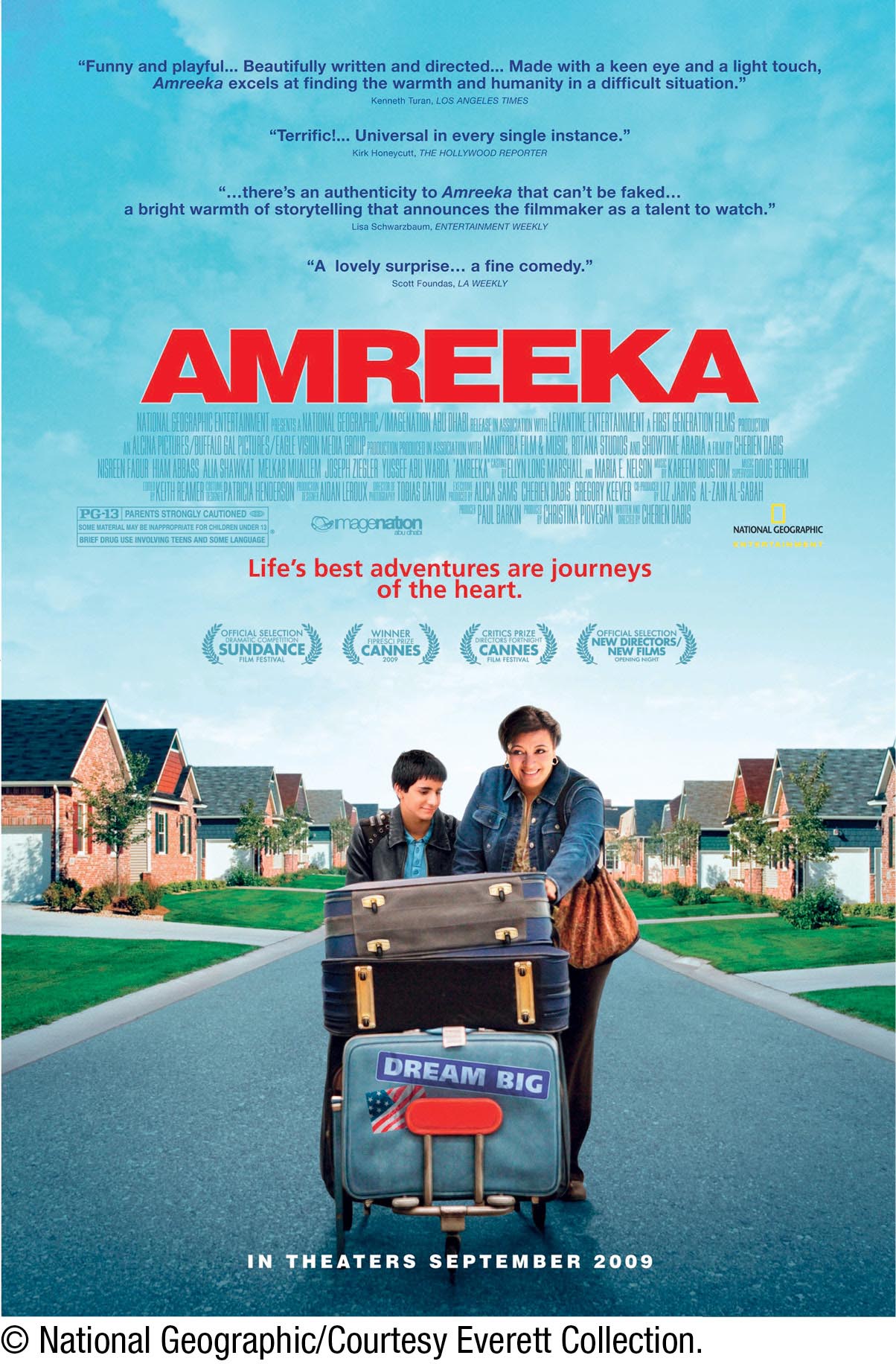Chapter 1: Introduction
The Big Picture
1
CHAPTER
“Making a film is a bit like switching off the light in the room and trying to navigate around by touch and feel and smell.”
– Steve McQueen, director of 12 Years a Slave (2013), Shame (2011), and Hunger (2008)

Amreeka (2009)
KEY CONCEPTS
 A film, or movie, is an art form whereby a series of moving images are strategically created and linked together for the purpose of telling a particular story both to entertain and to inform an audience of the filmmaker’s point of view and, in turn, evoke reactions and emotions.
A film, or movie, is an art form whereby a series of moving images are strategically created and linked together for the purpose of telling a particular story both to entertain and to inform an audience of the filmmaker’s point of view and, in turn, evoke reactions and emotions. All filmmaking involves collaboration, attention to story and character, and problem solving.
All filmmaking involves collaboration, attention to story and character, and problem solving. Because many skills are important for filmmaking, exploring the viewpoints of each key skill will help you understand the process.
Because many skills are important for filmmaking, exploring the viewpoints of each key skill will help you understand the process. Movies are made step by step.
Movies are made step by step.
Cherien Dabis made her presence felt even before she came up to the stage. Ninety-seven minutes earlier, the house lights had dimmed and her first feature film, Amreeka, began its premiere screening. Starting in Palestine’s West Bank and moving to suburban Chicago, Amreeka tells the story of an immigrant mother and son finding their way in a new land, America. As the final credits rolled, the audience rose to its feet with wild cheering as Cherien stepped to the microphone. She could barely contain her emotion as applause echoed through the theater.
Amreeka’s crowd-pleasing premiere took place at the 2009 Sundance Film Festival, an annual event in Park City, Utah, that has come to represent the epicenter of independent movies. Each year, Sundance screens more than 100 feature films and more than 50 shorts, selected from over 12,000 submissions by filmmakers worldwide. To be selected by Sundance is a high honor; to be seen by an even wider audience is an achievement reserved for only a few Sundance films.
Amreeka cleared that hurdle as well. It went on to achieve national theatrical distribution—the first film by a Palestinian American director to attain this milestone—and was nominated for numerous awards worldwide, winning many of them. Cherien herself collected the coveted International Federation of Film Critics Prize during the world-renowned Cannes Film Festival, following an eight-minute standing ovation for Amreeka when it screened there.
How did this happen? Just a few years before, Cherien had been in a class like yours. Born and raised in Omaha, Nebraska, she studied creative writing and communication at the University’s of Cincinnati, and then applied to the master’s program at Columbia University’s School of the Arts. There, Cherien began the first draft of the screenplay that would become Amreeka. She worked on it tirelessly for five years before she acquired the necessary skills and garnered the financing and production support to finally get the movie made.

Amreeka is an immigrant story—a tale of people exploring a world that is new to them and somehow, against great odds, finding their way. In similar fashion, filmmakers at all levels—and all film projects—must navigate a path through what is, initially, an undiscovered country. This is even truer in your case, as filmmaking students launching into the journey for the first time. Without guidance, examples, and study, the terrain is forbidding, and a place where you may easily lose your way. Informed with knowledge, practice, and mentoring, however, it can be a rich and exciting universe, full of the most creative people on the planet, sharing stories in their richest incarnations with audiences that hunger to be enlightened and entertained.
Along the way, every person’s path will be different, and Cherien’s path won’t be yours. As you will discover from the many people who tell their stories in this book, everyone follows a different muse and takes his or her own uniquely personal filmmaking journey. But that is one of the great attractions of a filmmaking career—those many paths, and the collaborators you can join forces with to create a cinematic sum greater than any single part along the way. If you get lost on one road, there are many others you can try. Eventually, if you work hard enough and maintain your focus, you will find an opportunity to move in the direction of your greatest skills and areas of interest. But first you need to learn about the possibilities that exist, and ground yourself with some core fundamentals you can use as a compass when the waters get choppy, as they certainly will. That is the purpose of this course and textbook: to provide a wide understanding of the filmmaking process, so that you can begin to discover for yourself which path you will want to continue on once you embark on the next phase of your journey.